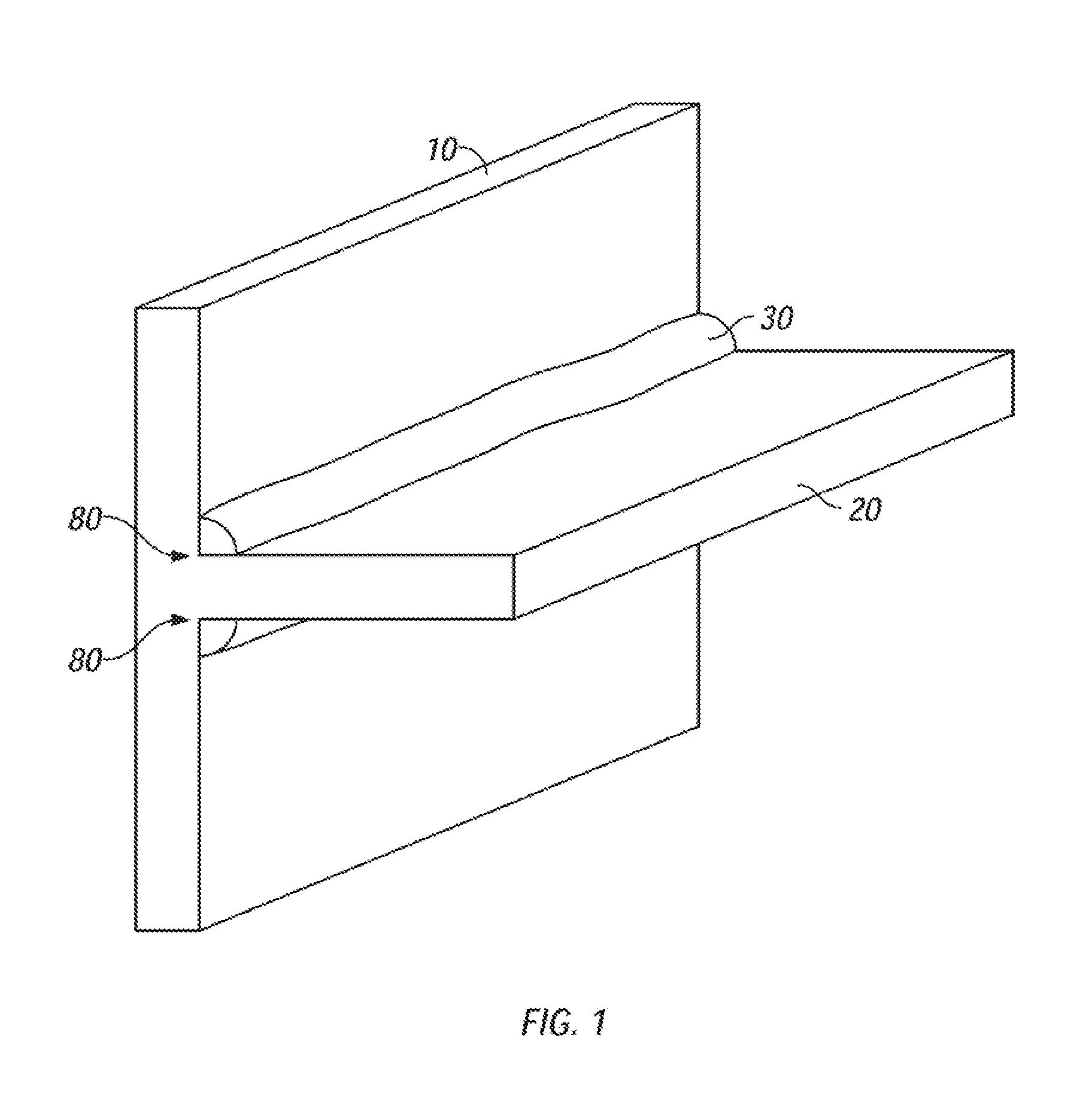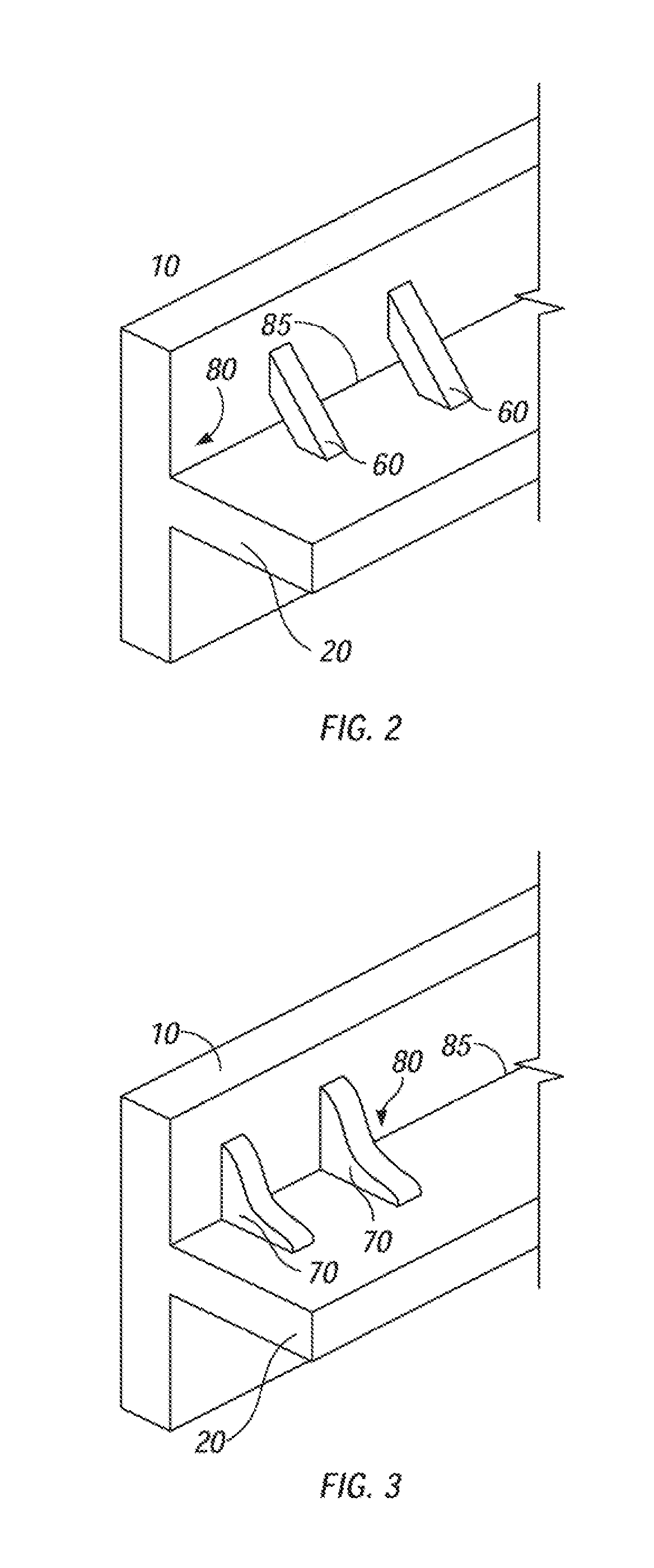Ribbed telescope mirrors with thermal gradient control
a technology of thermal gradient control and telescope mirrors, applied in the direction of mirrors, mountings, instruments, etc., can solve the problems of astronomical telescopes that operate on earth that cannot produce sharp images, the structure of mirrors became very soft and required internal support, and the mirrors are exposed to heat loads during optical polishing
- Summary
- Abstract
- Description
- Claims
- Application Information
AI Technical Summary
Benefits of technology
Problems solved by technology
Method used
Image
Examples
fifth embodiment
[0024]FIG. 6 is a three dimensional sketch showing a mirror plate 10 attached to a rib 20 with a fifth embodiment composite, segmented fillet 135 between the poorly mated surface 145 of the heat bridge 140 and the surfaces of the mirror 150 and rib 152. The heat conducting bridge 140 is made from heavy copper, silver or aluminum wire bent at an angle to approximate the interior angle 80. As shown on the Figure, not all the bridges 140 are necessarily the same length. The bridges 140 are thermally connected to the surfaces 150 with fillets of thermally conductive grease, silicone or epoxy 155.
sixth embodiment
[0025]FIGS. 7 and 8 show cross sections of joints between a mirror plate 10 and a rib 20 with a sixth embodiment continuous, composite fillet 160 of rigid tube or rod 165 and plastic heat conductor of thermally conductive grease, silicone or epoxy 155. The tube or rod 165 is preferably made from copper, silver or aluminum. Note that there will probably be a void 170 in the corner 85.
[0026]Thus, what results from this method is an improved, ribbed telescope mirror with a fillet of thermally conductive material 30, 60, 70, 100, 110, 145, 170 in thermal contact with the mirror plate 10 and the supporting rib 20 at the interior angle 80 between the mirror plate 10 and supporting rib 20. The fillet 30, 60, 70, 100, 110, 145, 170 can be made of all the materials identified above.
[0027]Those most familiar with the art to which this invention pertains will readily appreciate that grease can readily be removed from any surface with rags and solvent. Also, RTV is easy to remove from surfaces ...
PUM
| Property | Measurement | Unit |
|---|---|---|
| thermally conductive | aaaaa | aaaaa |
| temperature | aaaaa | aaaaa |
| exterior angle | aaaaa | aaaaa |
Abstract
Description
Claims
Application Information
 Login to View More
Login to View More - R&D
- Intellectual Property
- Life Sciences
- Materials
- Tech Scout
- Unparalleled Data Quality
- Higher Quality Content
- 60% Fewer Hallucinations
Browse by: Latest US Patents, China's latest patents, Technical Efficacy Thesaurus, Application Domain, Technology Topic, Popular Technical Reports.
© 2025 PatSnap. All rights reserved.Legal|Privacy policy|Modern Slavery Act Transparency Statement|Sitemap|About US| Contact US: help@patsnap.com



